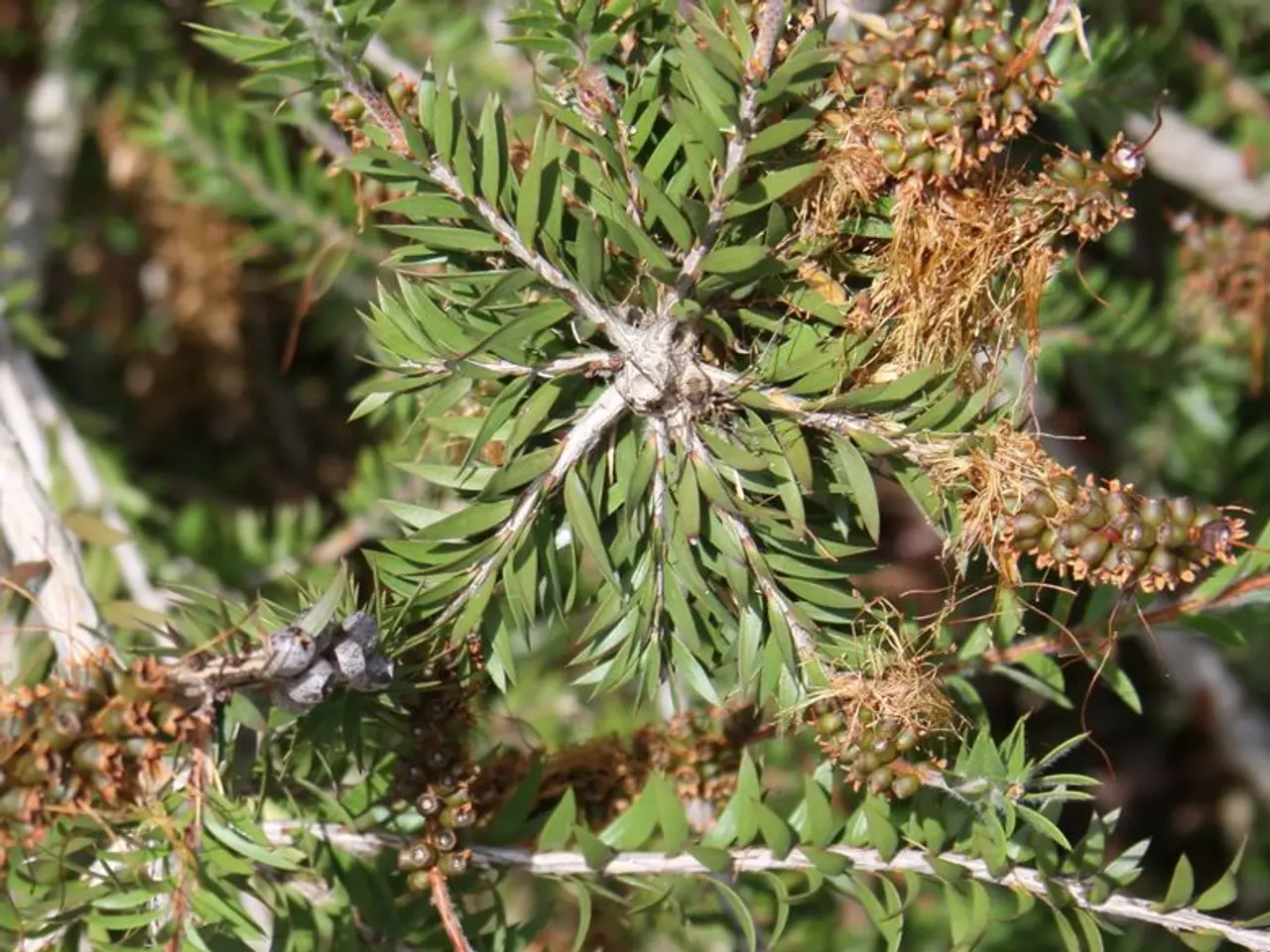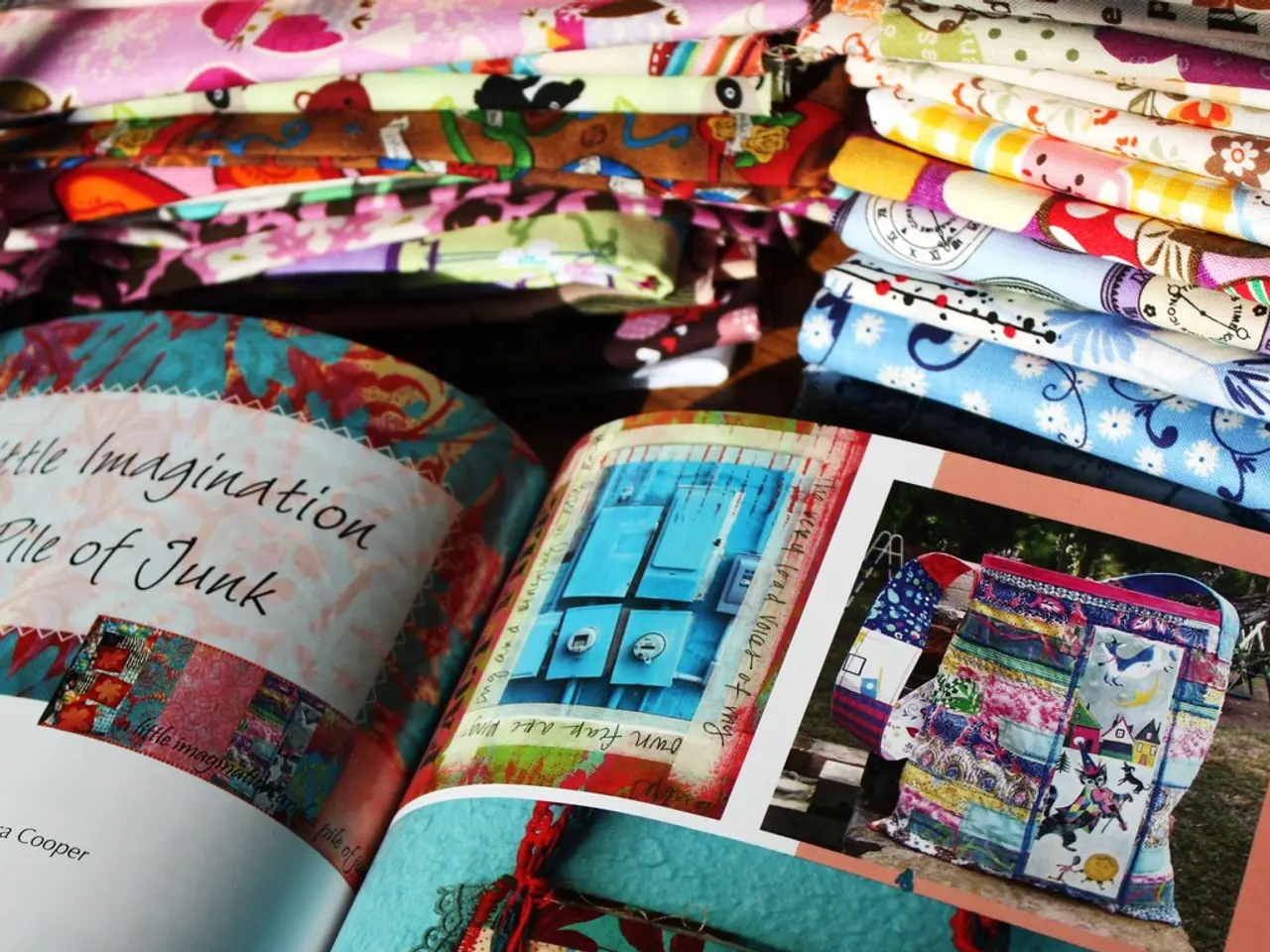Top Picks for Shaping Fruit Trees into Bonsai
Bonsai enthusiasts can now enjoy the double delight of beautiful miniature trees and delicious fruits by growing edible fruit trees as bonsai. Two popular choices for bonsai are the Japanese Persimmon (Diospyros kaki) and American Persimmon (Diospyros virginiana), known for their vibrant foliage, small size, and delicious fruit. Other fruit trees like citrus, apple, cherry, and even passion fruit can also be successfully grown as bonsai [1].
To ensure the successful growth of edible fruit on bonsai, it's essential to create an environment that mimics the natural conditions of the specific fruit tree species. For instance, tropical varieties like citrus trees thrive in warmer temperatures, while temperate species like apple and cherry trees prefer cooler temperatures [2].
Humidity also plays a critical role in the development of fruits in indoor bonsai. Increasing humidity can be achieved by placing a tray filled with water near the bonsai or using a humidifier in the room [3].
When growing fruit trees as bonsai indoors, factors such as light levels, temperature, humidity, and pollination play a crucial role in determining whether the tree will bear fruit. Some bonsai trees rely on cross-pollination from insects or wind, so this should be considered when choosing a bonsai tree and maintaining an indoor environment [4].
It's important to note that not all types of fruit trees produce equally tasty fruits when grown as bonsai. Some varieties may have smaller or less flavorful fruits compared to their larger counterparts [5].
The best practices for growing and maintaining edible fruit on bonsai trees involve careful attention to species selection, pruning, watering, light, soil, fertilization, and patience. Here's a breakdown of these best practices:
- Choose suitable fruit species: Lemon, orange, apple, or passion fruit trees have proven records of producing small, edible fruits in bonsai form [2][3][5].
- Start from seed or nursery stock: Be patient during growth, as bonsai trunk thickening and shaping take years, and proper techniques like trunk chopping and wound healing are important for strong development [1][4].
- Provide appropriate sunlight: Ideally, bonsai should receive 4 to 6 hours of bright but indirect light daily. East or west-facing windows work well indoors. Outdoor temperate bonsai need seasonal temperature swings, while tropical bonsai can thrive indoors [4].
- Use fast-draining soil: Soil with components like akadama, pumice, lava rock, or perlite is preferred instead of dense potting soil, which causes root suffocation [4].
- Water carefully: Water deeply only when soil feels dry a finger’s depth down to avoid root rot from overwatering. Checking daily is recommended, but not daily watering [4].
- Fertilize moderately: During the growing season, fertilize with diluted liquid fertilizer every 2 to 4 weeks. Overfertilization causes coarse growth and reduces bonsai’s delicate appearance [4].
- Prune regularly: Pruning helps maintain the miniature shape, encourages flowering and fruiting, and improves trunk thickness and nebari (surface roots) [1][2].
- Manage pests and diseases: Fruiting bonsai may be more susceptible to common problems like pests or fungal issues due to the stress of fruit production. Careful management is necessary [2].
- Be patient and consistent: Many bonsai, especially fruit-bearing ones, require several years of training and care before producing quality flowers and fruit [1][2].
Cherry trees, such as the Yoshino cherry and Japanese flowering cherry, are also popular bonsai choices due to their beautiful blossoms and fruit [6].
In summary, successful fruit-bearing bonsai combine species with fruiting potential, the right environmental conditions, proper soil and watering, balanced fertilization, technical pruning, and patience for long-term growth and fruit production. This approach maximizes both the aesthetic and edible value of bonsai fruit trees [1][2][3][4].
[1] Bonsai Emporium
[2] Bonsai Ton
[3] Bonsai4me
[4] The Bonsai Garden
[5] Bonsai Basics
[6] Bonsai Bark
By selecting suitable fruit species like the Yoshino cherry and Japanese flowering cherry, which have proven records of producing edible fruits in bonsai form [6], you can create a fascinating blend of home-and-garden lifestyle appreciation with the artistic beauty of tree species [1]. To maintain the optimal growth and fruiting of these species indoors, it's essential to consider factors such as light levels, temperature, humidity, and pollination that closely resemble their natural conditions [4].




